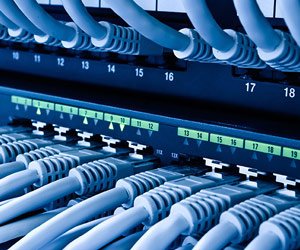From the data center to the edge, 5G and high-speed flash storage are enabling emerging IoT use cases from autonomous vehicles to smart cities and the supply chains of the future. When designing storage to support IoT at the edge, you must consider how 5G and your storage choice will impact data center architectures.
5G connections and mobile traffic are increasing. These increases will require changes to edge and core architectures in order to support this tidal wave of new applications and services, and most importantly, data.
Challenges: Complexity and Speed of Data
Today’s challenges with data are heterogeneous. Data is scattered and unstructured in mixed storage and computing environments – endpoints, edge, on-premises, cloud, or a hybrid, which uses a mix of these. Data is also accessible across different architectures, including file-based, database, object, and containers. There are also issues of duplications and conflicts of data.
5G will surely add more complexity to today’s existing challenges. With 5G, even more data will be generated from endpoints and IoT devices, with more metadata and contextual data produced and consumed. As a result, there will be more demand for real-time processing and more edge compute processing, analyzing, and data storage scattered throughout the network.
What is Your Data Strategy?
Each application and use case is unique and has different storage requirements and challenges, including performance, integrity of data, workloads, retention of data, and environmental restrictions. In the past, the capabilities of general-purpose storage greatly exceeded the requirements of networks, data, and applications. Now, with the insurgence of endpoints, edge computing, and cloud computing, storage has to meet advanced use cases and environment demands that general-purpose storage is not suited for. With the move to 5G, companies will need to re-think and architect which data they want to capture, process and keep across endpoints, edge compute and cloud.
Impact of 5G on the Future of Storage
This paper will explain how 5G will primarily be an enabler of digital transformation and have a significant impact on where data is stored and processed and how that will impact the future of storage.
Download Now5 Edge Computing Design Considerations
Today and in the new 5G era, there are five key edge design considerations for storage:
- Environmental: In what kind of environment will the data be captured and kept? The most critical environmental conditions that can affect storage performance are altitude, temperature, humidity, and vibration. For example, a smart car outside in the desert heat or during a snowstorm will need to withstand extreme temperatures. Sensors in the mountains or on a highspeed train in Japan will need to be resistant to pressure and movement.
- Endurance and Workload: How many times can you write to the storage? Is your application write-intensive, such as video recording for surveillance, or read-intensive, such as map navigation and or music from the car infotainment system? Is your equipment in a hard-to-reach place, such as a video surveillance camera at the top of a building, or behind the secured doors of a bank vault? In these scenarios, a high endurance storage solution will help limit the frequency of maintenance and replacement.
- Data Retention: How long does the data need to be stored? What do you want to process, analyze and save at the endpoints, at the edge, and in the cloud? For example, a corporate database may require documents to be stored electronically for five years or longer due to governance specifications. Specific data may also be retained for future analytics. The storage solution needs to meet the data retention policy and capacities required for various applications/use cases and regulations.
- Monitoring: How is the data monitored? Who has access to the data collected? How good is the data? With rapid increases in the number of connected devices and edge compute deployments, and the complexity of data being generated, people want to have access to the data at all times. Having the ability to monitor both the health of the storage device as well as the health of the data is becoming more important to users these days to ensure data integrity and cost management.
- Security: How will the data be protected? Typically, data is secured on the host side (CPU), but hosts can be susceptible to tampering. Depending on what data is being collected, it may also need to be protected on the data storage device itself through encryption while data is at rest.
Defining Edge Computing Design from the Endpoints
5G is going to be fast, and it will bring in new, extreme use cases. We need to think differently about edge computing and architectures optimized with the right storage for the right application. Without clearly defining a data storage strategy looking at both user and application needs from the endpoints, through edge and cloud, 5G and future environments will not rise to their full potential.

